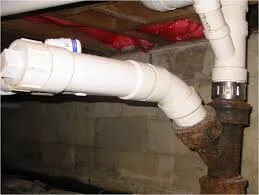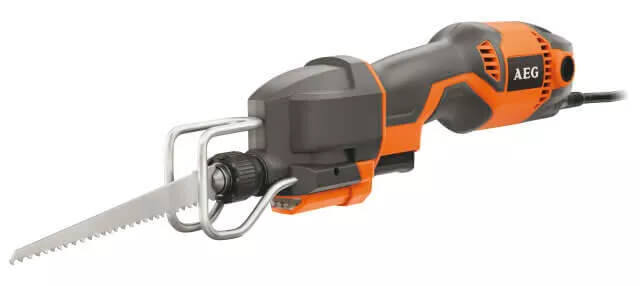
Connecting PVC to cast iron is no easy feat. And it’s definitely not something I recommend the casual DIYer or homeowner do themselves.
Although I understand there are a few reasons why someone might go to the internet to find out more information about connecting PVC to cast iron.
So how do you do it, and is it a good idea?
Why Connect PVC to Cast Iron?
Why would someone be interested in learning how to connect PVC to cast iron?

f you’re home was built before the mid-1980s, you most likely have a cast iron sewer system. And if you’re adding a new kitchen or bathroom, you might be thinking about DIYing the plumbing. Since cast iron is no longer used for residential sewer systems, you need a way to connect new PVC pipe to your old cast iron system.
Or you’re thinking about repairing leaks in an older home’s system to prolong the inevitable — replacing the entire system (which, btw, is our recommendation). Even if you aren’t going to do this yourself, which again, I do not recommend, you might be interested in the process.
What Can Go Wrong If You Do It Yourself
Let me first say, though, working with cast iron is very difficult. You need a special tool to cut the cast iron. Cast iron is also very heavy, so if you’re cutting out a large portion, it could be difficult to handle by yourself.
There’s also a high likelihood you will run into the same problems we have when trying to repair cast iron sewer leaks. At this point in the game, most cast iron is so bad that finding a viable piece to connect the PVC pipe is almost impossible.
And since most cast iron systems are underground, getting to the pipe or a usable piece of pipe might involve tunneling. And I would not recommend anyone DIY tunneling nor would I recommend hiring an outside tunneling crew.
Also because sewer systems are built to use the power of gravity, if you don’t get the right “fall,” your system will not work aka water and waste will not drain out of your system as it’s supposed to do.
How To Connect PVC to a Cast Iron Sewer Pipe
For our purposes here, I’m going to assume you already know where you need to connect the new pipe to the old whether it be for a leak or for a remodel job.
What you’ll need:
- Safety glasses
- Chalk
- Pipe supports
- Reciprocating saw with special cast iron cutting blade
- PVC pipe
- Two rubber adapters

Step 1 – Mark the cut
Use the chalk to mark where you want to cut
Step 2 – Pipe Supports
Use the pipe supports to support both the piece of pipe you’re cutting away and the remaining pipe. You don’t want a piece of this heavy pipe to fall.
Step 3 – Cut the cast iron pipe
Put on your safety glasses and use the reciprocating saw to cut the pipe at your marks.
There are a few different tools you can use to cut cast iron: a snap cutter, a reciprocating saw, or a grinder.
A snap cutter can bend the pipe or even crush it and grinder wheels can fly off when using them, so a reciprocating saw is probably your best bet.
However, keep in mind you need a special blade to cut the cast iron. Normal, off-the-shelf blades for metal will not work. You can rent a saw from your local The Home Depot.
Step 4 – Cut the PVC pipe
Cut your PVC pipe. You want it to be longer than the area you cut because it will slide into the spot where you cut out the bad cast iron pipe.
Step 5 – Attach rubber adapters
The rubber adapters are all you need. You don’t need a sealant or glue for the adapters.
Keep in mind, too, that the type of adapter you use will depend on where you’re using it. Check your local code to make sure. Some are and some aren’t allowed buried underground.
Step 6 – Insert PVC pipe
Join the PVC pipe with the cast iron by inserting it into the adapters.
Step 7 – Test for leaks
You want to run water through the pipe to make sure there aren’t any leaks. It’s not a guaranteed method of checking for leaks. You really need to plug the line with something like a test ball. I talk about the process here in this post.
Because every situation and home is different, it’s hard to go into too many specifics on how to do this — another reason I don’t recommend someone do this kind of job themselves.
There are just too many variables and too many things that could go wrong.
Should You Connect PVC to Cast Iron?
As I’ve mentioned multiple times on the blog, most cast iron sewer systems are in need of replacing if not now, soon. So tying on to bad cast iron with a piece of PVC pipe is just inviting more trouble down the road, in my opinion.
Not only do I want to discourage you from doing the job yourself because of all the issues I mentioned earlier, I also feel strongly that most cast iron systems should be replaced. Because of this, making repairs or tying on to an old system is a waste of time and money.
Give Us a Call
While we don’t handle remodeling jobs, if you suspect you have leaks in your cast iron sewer system or you have any questions, give us a call.
We are happy to answer your questions and design a plan that works with your situation. We can be reached at 972-494-1750. And feel free to email service@inhouseplumbingcompany.com.

